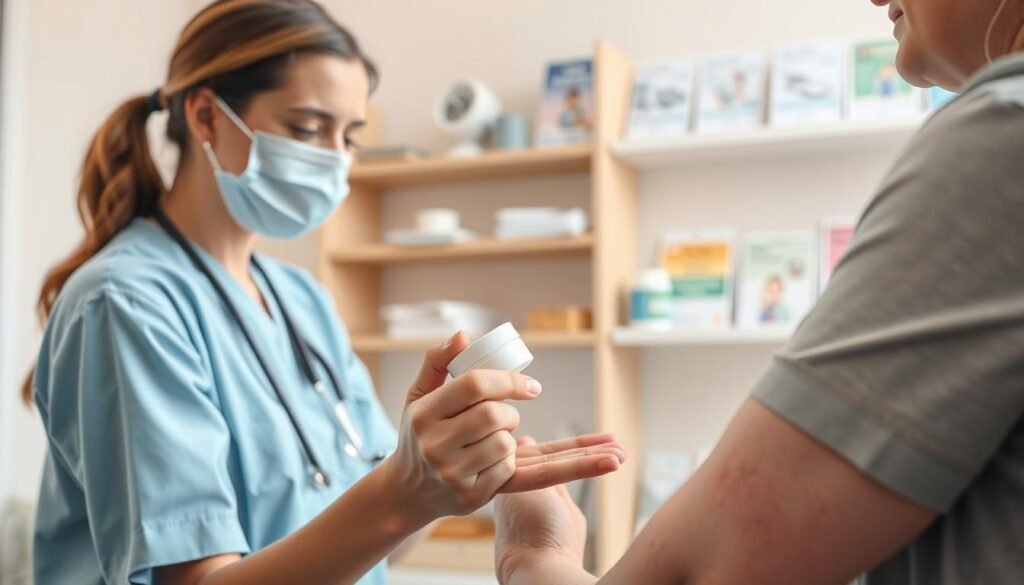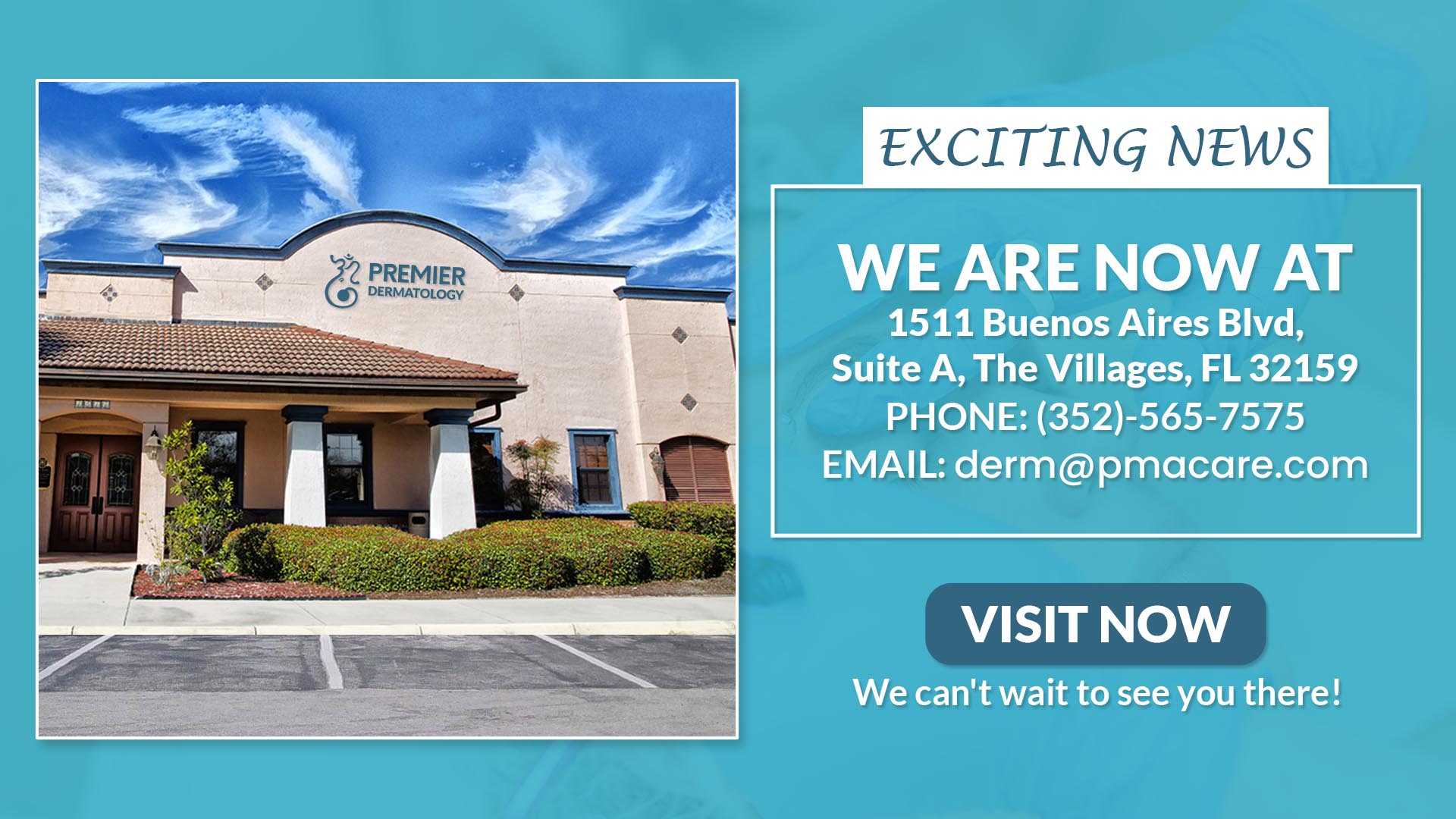The painful rash that showed up was different. My skin felt like it was on fire, showing a deeper fight was happening. Shingles scarring became a personal journey of healing and understanding.
Shingles is a viral infection that can leave lasting marks on our skin and lives. Our guide will explore the world of shingles scarring. We’ll look at prevention and treatment strategies that can help.
To prevent shingles scars, knowing is key. Understanding the virus and acting early can help avoid permanent damage. This knowledge is our strongest tool.
Key Takeaways
- Shingles can potentially cause permanent skin scarring
- Early medical intervention is key to reducing complications
- About 1 in 3 people will get shingles in their lifetime
- Vaccines can prevent or lessen shingles severity
- Proper wound care is vital to lower scarring risks
Understanding Shingles and Its Impact on Skin
Shingles is a viral infection that can cause a lot of discomfort. It can also lead to skin problems. The virus that causes chickenpox stays in our nerves and can come back years later, causing pain.
Learning about shingles helps us understand how it develops and its effects. About 10% to 20% of people who had chickenpox will get shingles later in life.
What Causes Shingles
Several things can make shingles come back:
- Weakened immune system
- Aging (most common in individuals over 50)
- Chronic medical conditions
- High stress levels
How Shingles Affects Different Body Areas
Shingles shows up as a painful rash on different parts of the body, like:
- Torso
- Face
- Neck
- Arms
Initial Signs and Symptoms
Spotting shingles early is key. People might notice:
- Burning or tingling sensations
- Sensitive skin patches
- Fluid-filled blisters
- Localized pain
“Early detection and treatment can significantly reduce complications and scarring risks.”
Antiviral treatments work best when started within 72 hours of symptoms. People with weak immune systems or chronic conditions should watch for shingles signs closely.
The Process of Shingles Scarring
Shingles can be a tough skin condition that might lead to shingles scarring complications. Not everyone gets scars, but knowing how shingles affects the skin is key to managing it well.
Our bodies react differently to the varicella-zoster virus, which causes shingles. The shingles scarring stages go through several important phases:
- Initial viral outbreak
- Rash development
- Blister formation
- Healing and possible scarring
About 30% of people might get some skin scarring from shingles. The risk goes up with:
- How severe the virus is
- Getting treatment late or not enough
- Bacterial infections after shingles
- How well your immune system works
“Prevention and early intervention are key to minimizing shingles scarring complications” – Dermatology Research Institute
| Scarring Risk Factor | Impact Level |
|---|---|
| Age Over 50 | High |
| Compromised Immune System | Very High |
| Delayed Medical Treatment | Moderate to High |
We suggest getting medical help right away if you think you have shingles. This can help avoid long-term skin damage and lower the chance of permanent scars.
Early Warning Signs and Risk Factors
Knowing the early signs and risk factors of shingles is key to managing scarring. Spotting these signs early can help protect your health and prevent long-term skin damage.
Common Risk Factors for Shingles
Several factors increase the risk of shingles scarring. Our research shows who is most at risk:
- Advanced age (50 years and older)
- Weakened immune system
- Chronic medical conditions
- High stress levels
- Previous chickenpox infection
Identifying Early Symptoms
Spotting symptoms early is vital for managing scarring. Look out for these signs:
- Burning or tingling sensation in specific skin areas
- Localized pain before rash appearance
- Sensitivity to touch in affected regions
- Small red patches developing into fluid-filled blisters
High-Risk Population Groups
Some groups face higher risks of shingles scarring:
| Group | Risk Level | Potential Complications |
|---|---|---|
| Adults 60+ years | High | Increased chance of postherpetic neuralgia |
| Immunocompromised individuals | Very High | More severe and prolonged symptoms |
| Cancer patients | High | Potential treatment interruptions |
“Knowledge is the first line of defense against shingles and its scarring complications.” – Dermatology Research Institute
By knowing these risk factors and symptoms, you can work with your doctor. Together, you can prevent and manage shingles effectively.
Prevention Strategies for Minimizing Scar Formation
To prevent shingles scars, we need a detailed plan for wound care. Our methods protect the skin and help the body heal naturally. By managing wounds carefully, people can lower the chance of scarring from shingles.
- Avoid scratching or picking at blisters
- Keep the affected area clean and dry
- Use prescribed antiviral medications promptly
- Protect the skin from direct sunlight
- Maintain proper wound hygiene
Experts suggest specific ways to prevent shingles scars. Quick and careful wound care can greatly lower scarring risk. It’s important to follow your doctor’s advice closely.
“Proper care during the first week of a shingles outbreak is key to avoiding long-term skin damage.” – Dermatology Research Institute
Here are some prevention strategies we recommend:
| Prevention Method | Effectiveness | Recommended Duration |
|---|---|---|
| Topical Antibiotic Ointments | 70% Scar Reduction | 2-3 Weeks |
| Silicone Gel Treatment | 50% Scar Visibility Decrease | 1-3 Months |
| Wound Massage Therapy | 40% Improvement in Scar Appearance | 1 Month Post-Outbreak |
Good nutrition is also key in preventing shingles scars. Drinking 8-10 glasses of water a day helps healing. Eating foods rich in vitamins A, C, and zinc boosts the body’s healing power.
By using these prevention strategies, people can greatly reduce scarring risk. This supports the body’s natural healing process.
Immediate Care During Shingles Outbreak
Quick and proper care can greatly reduce the risk of long-term skin damage from shingles. Shingles outbreaks need careful attention to prevent complications and lessen scarring.

During a shingles outbreak, immediate care is key for effective treatments. Our approach includes wound management, preventing infection, and easing discomfort.
Proper Wound Care Techniques
- Keep the affected area clean and dry
- Use gentle, fragrance-free cleansers
- Apply prescribed topical medications
- Cover blisters with loose, breathable bandages
Avoiding Cross-Contamination
Preventing the virus spread is vital:
- Wash hands thoroughly before and after touching affected areas
- Avoid scratching or picking at blisters
- Use separate towels and bedding
- Wash clothing and linens in hot water
Managing Pain and Discomfort
| Pain Management Strategy | Recommended Approach |
|---|---|
| Over-the-Counter Medication | Ibuprofen or Naproxen for inflammation |
| Cold Compress | Apply for 10-15 minutes to reduce pain |
| Prescription Options | Consult healthcare provider for specific treatments |
“Prompt and careful management can significantly reduce the risk of long-term scarring from shingles.” – Dermatology Research Institute
Remember that individual experiences may vary, and professional medical advice is always recommended for personalized shingles scarring treatments.
Medical Treatments for Active Shingles
Medical help is key in treating shingles scarring. It helps manage the virus and prevent skin damage. We focus on quick and effective treatments to lessen symptoms and avoid long-term issues.
Antiviral drugs are the main treatment for shingles. They stop the virus from spreading and make the outbreak less severe. Valacyclovir is often the first choice because it’s easy to take three times a day.
“Early treatment is key to managing shingles scarring and reducing possible long-term skin problems.”
Primary Medical Treatment Options
- Valacyclovir: Most recommended antiviral medication
- Acyclovir: A cheaper option that needs more doses
- Famvir: Another antiviral choice
Our doctors say to start antiviral treatment within 72 hours of the rash. This early start helps stop the virus from spreading and lowers scarring risks.
| Medication | Dosing Frequency | Treatment Window |
|---|---|---|
| Valacyclovir | 3 times daily | First 72 hours |
| Acyclovir | 5 times daily | First 72 hours |
| Famvir | 3 times daily | First 72 hours |
Managing shingles scarring also means treating pain and supporting the body. We tackle the virus and skin issues together. This way, patients get the best care for a full recovery.
Natural Remedies for Scar Prevention
To prevent shingles scars, we need a mix of natural remedies, diet, and lifestyle changes. Our guide will show you how to reduce scarring and help your skin heal after shingles.
Herbal Solutions for Skin Recovery
Herbs can be key in healing shingles scars. Some herbs help with skin health and reduce swelling:
- Aloe vera for soothing skin irritation
- Calendula to promote wound healing
- Chamomile for reducing skin inflammation
- Echinacea to boost immune system response
Nutrition-Focused Healing Strategies
Your diet affects scar prevention and skin healing. Add these nutrients to your meals:
- Omega-3 rich foods: Salmon, walnuts, and flaxseeds
- Vitamin C sources: Citrus fruits, bell peppers, and strawberries
- Zinc-packed foods: Pumpkin seeds, lean meats, and legumes
“Nutrition is the foundation of healing. What you eat can dramatically influence your body’s ability to recover and minimize scarring.” – Dermatology Experts
Lifestyle Modifications for Optimal Healing
Preventing shingles scars is more than just creams. Making these lifestyle changes helps your recovery:
- Manage stress through meditation or yoga
- Get adequate sleep (7-9 hours nightly)
- Avoid direct sunlight on affected areas
- Stay hydrated with water and herbal teas
Using these natural remedies and holistic methods can help your skin heal. This way, you can lower the chance of lasting shingles scars.
Professional Scar Treatment Options
Patients facing shingles scarring have many professional options. Dermatologists use advanced methods to lessen scarring. They choose treatments based on the skin and scar type.
- Silicone-based products for scar management
- Steroid injection treatments
- Advanced laser therapy techniques
- Surgical interventions
Dermatologists look at scars in different ways:
| Evaluation Criteria | Treatment Considerations |
|---|---|
| Scar Size | Determines invasiveness of procedure |
| Scar Depth | Influences treatment methodology |
| Skin Texture | Guides selection of therapeutic approach |
Laser treatments are a modern way to reduce shingles scarring. Techniques like Genius™ Microneedling use radiofrequency. This method helps lessen scarring with little pain.
“Our goal is to provide personalized treatment that addresses both the physical and emotional impacts of shingles scarring.” – Dermatology Research Institute
Results vary, but most see big improvements after 1-5 sessions. Recovery times range from 0 to 5 days, depending on the treatment.
Advanced Medical Procedures for Scar Reduction
Patients have many advanced medical options for shingles scarring treatments. These methods can greatly improve how skin looks and feels.
Modern medicine brings new ways to lessen and treat shingles scars. These methods offer hope for those looking to manage their scars well.
Laser Therapy Breakthrough
Laser treatments are a leading-edge solution for shingles scarring. Studies show they can make a big difference:
- CO2 laser resurfacing can address multiple skin concerns
- Recovery time ranges from one to two weeks
- Full-face treatments take 1.5 to 2 hours
- Redness typically fades within two to three months
Surgical Intervention Strategies
Surgical options are available for more serious scarring. Experts can choose the best method for each case.
Injectable Treatment Options
Injectable treatments are another good way to handle shingles scars:
- Corticosteroid injections can flatten scars by up to 50%
- Multiple sessions may be required for optimal results
- Consultation with a dermatological specialist increases success rates
“Approximately 70% of patients experience ongoing improvement in scar appearance one year after treatment completion.” – Dermatological Research Institute
We take a detailed approach to shingles scarring treatments. We make sure each patient gets care that fits their needs for the best results.
Long-term Management of Shingles Scarring

Managing shingles scarring is more than just the initial healing. It’s about making scars less visible and keeping the skin healthy. This approach helps over time.
Understanding the stages of shingles scarring is important. About 1 in 3 people get herpes zoster in their life. So, managing scars long-term is key for those affected.
“Effective scar management is a marathon, not a sprint” – Dermatology Experts
Key Long-term Management Strategies
- Regular skin moisturization
- Consistent sun protection
- Gentle massage techniques
- Periodic professional skin assessments
Protecting scars from the sun is vital. Sun can make scars darker and heal slower. Use sunscreen with at least SPF 30 to protect your skin.
Monitoring Scar Progression
| Scar Stage | Recommended Action | Duration |
|---|---|---|
| Initial Healing | Intense moisturizing | First 3-6 months |
| Scar Maturation | Professional scar treatments | 6-12 months |
| Long-term Management | Maintenance treatments | 1-2 years post-outbreak |
Most herpes zoster cases happen in people over 50. This shows why age-specific care is important for scars.
Seeing a professional every 6-12 months is helpful. They can track your scar’s progress and adjust your treatment. Everyone heals differently, so a custom plan is best for managing shingles scarring.
Complications Associated with Shingles Scars
Shingles can cause serious health problems beyond the initial outbreak. Knowing about shingles scarring complications helps patients deal with long-term health issues.
Physical Complications of Shingles Scarring
Shingles scarring symptoms can affect you in many ways:
- Postherpetic neuralgia (chronic nerve pain)
- Muscle weakness in affected areas
- Potential sensory nerve damage
- Reduced mobility depending on scar location
One big problem is postherpetic neuralgia, affecting about 20% of shingles patients. This condition can cause long-lasting pain that lasts months or even years after the initial outbreak.
Psychological Impact of Shingles Scarring
“Visible scars can profoundly affect an individual’s emotional well-being and social interactions.”
The mental effects of shingles scarring symptoms include:
- Reduced self-confidence
- Social anxiety
- Depression
- Body image concerns
Our research shows people over 50 are most at risk for these serious complications. Getting early medical help and counseling can help a lot.
Role of Nutrition in Scar Healing
Nutrition is key in managing shingles scarring and helping skin heal. Our bodies need certain nutrients to fix damaged skin and lessen scarring from shingles.
Some nutrients are vital for skin repair and treating shingles scars. Our research shows important nutritional strategies for healing:
- Vitamin C: Crucial for collagen production and skin regeneration
- Vitamin E: Supports skin tissue repair and reduces inflammation
- Zinc: Promotes wound healing and immune system function
- Omega-3 fatty acids: Reduces inflammation and supports skin health
“Food is medicine when it comes to skin healing and recovery” – Nutrition Experts
Making smart food choices can greatly affect scar formation. Foods rich in nutrients like fatty fish, leafy greens, berries, and nuts help skin heal.
| Nutrient | Food Sources | Healing Benefits |
|---|---|---|
| Vitamin C | Citrus fruits, bell peppers | Collagen production |
| Zinc | Beans, nuts, seeds | Wound healing |
| Omega-3 | Salmon, walnuts | Inflammation reduction |
We suggest eating a balanced diet with enough protein, water, and nutrient-rich foods. While supplements can be helpful, getting nutrients from whole foods is the best way to manage shingles scarring.
When to Seek Professional Help
Managing shingles scarring needs quick and expert medical help. Knowing when to get help can lessen risks and prevent long-term skin damage.
Emergency Warning Signs
Some symptoms need immediate medical care during a shingles outbreak. Our experts say watch for these critical signs:
- Rash near the eye or involving the eye area
- Severe, unmanageable pain
- High fever above 101°F
- Rapidly spreading rash
- Signs of bacterial skin infection
Choosing the Right Healthcare Provider
Finding the right healthcare provider is key to managing shingles scarring risks. Here are some tips for choosing the right medical expert:
| Provider Type | Best For | Recommended Action |
|---|---|---|
| Primary Care Physician | Initial diagnosis and treatment | First point of contact |
| Dermatologist | Scar prevention and treatment | Specialized skin care |
| Pain Management Specialist | Chronic pain from shingles | Advanced pain management |
“Early intervention is key to preventing long-term complications from shingles.” – CDC Recommendation
Our medical team offers full shingles care in multiple Florida locations. We tackle the complexities of shingles scarring and tailor treatments for each patient.
Contact Information
For expert advice and support, contact our team:
- Phone: +1(352) 565-7575
- Locations:
- Orlando, FL
- Clermont, FL
- The Villages, FL
- Kissimmee, FL
- Ocala, FL
Remember, quick medical care can greatly reduce your shingles scarring risks and aid in faster healing.
Latest Research and Developments
New research is changing how we treat shingles scarring. Scientists are finding new ways to lessen scarring and help patients. These breakthroughs give hope to those dealing with shingles’ lasting effects.
Recent studies have shown promising ways to handle shingles problems. The latest medical research is making progress in several areas:
- Advanced antiviral medication protocols
- Targeted vaccine development
- Breakthrough scar reduction techniques
- Comprehensive pain management strategies
Recent studies have made big strides in managing shingles:
- The ZEDS trial showed a 26% drop in eye disease with valacyclovir treatment
- Research suggests vaccines might lower dementia risk
- Immunization is showing promise in preventing severe issues
“We are witnessing a new era of precision medicine in shingles treatment and scar prevention,” noted leading researchers in the field.
Our knowledge of treating shingles scarring is growing. With over 1 million new cases each year in the U.S., these advances offer hope. They aim to reduce scarring and manage long-term issues.
Conclusion
Understanding shingles scarring is key to managing it well. In the U.S., there are about 1 million cases each year. This makes it important to tackle shingles scarring early on. We’ve looked at ways to lessen long-term skin damage and aid in healing.
Dealing with shingles scarring needs a few steps. Starting early, taking good care of wounds, and getting doctor advice are essential. Our studies show people over 50 are at higher risk, with 50% of those 80 and older getting it. Knowing your risk and getting treatment fast can make a big difference.
If you’re worried about shingles scarring, our team is here to help. We’re in Florida, covering places like Orlando, Clermont, and The Villages. Our experts are ready to create a treatment plan just for you.
Prevention and early treatment are your strongest allies against shingles problems. We urge everyone to stay up-to-date, talk to doctors, and take care of their health. If you have questions or worries, call us at +1(352) 565-7575. We’re here to help you through it all.




